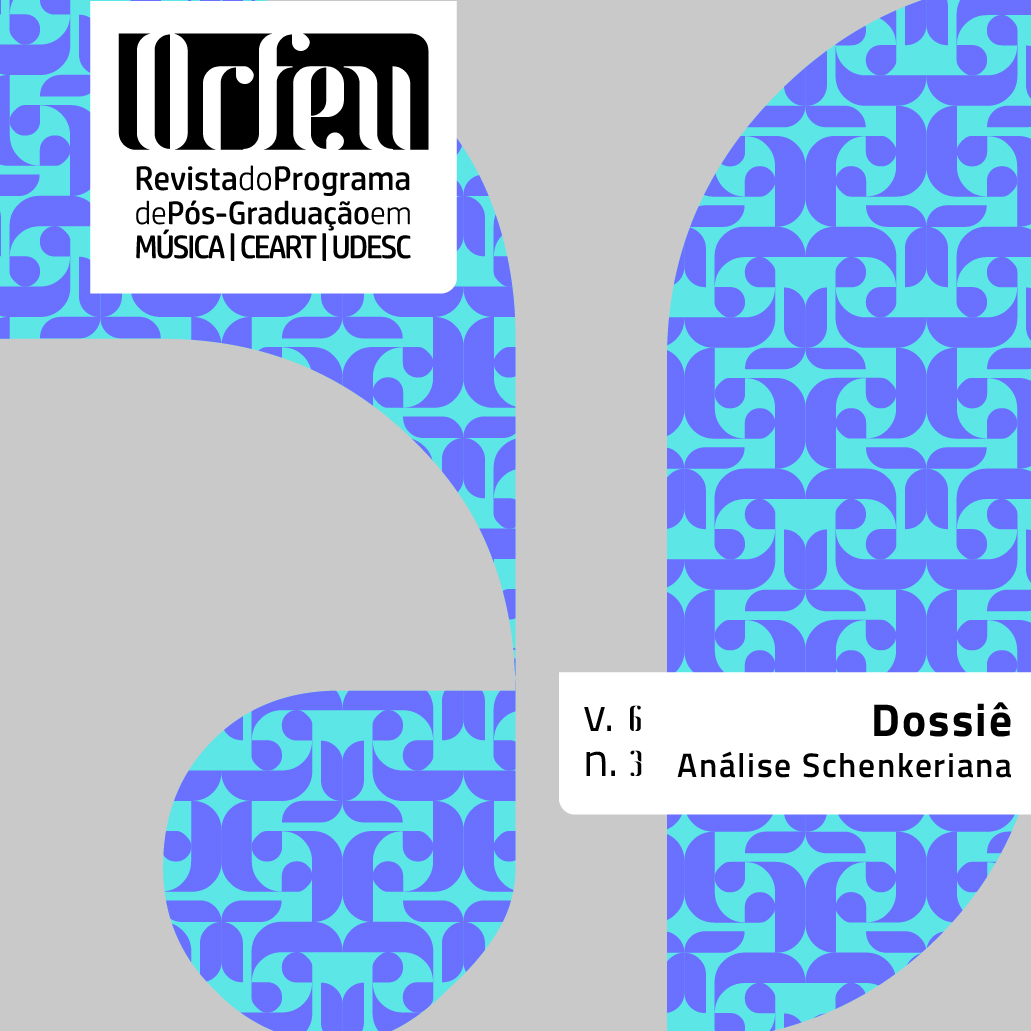Rules Are Made to Be Broken, or the Menuetto of Beethoven’s Op. 2, No. 1
DOI:
https://doi.org/10.5965/2525530406032021012Keywords:
Beethoven, motive, Schenkerian analysis, TonwilleAbstract
A striking gesture appears at the climax of the first phrase of the Menuetto from Ludwig van Beethoven’s Sonata for Piano in F minor, Op. 2, No. 1. This motivic gesture, which may be understood as derived from manipulation of standard voice-leading procedures, has intriguing ramifications that deeply affect the structure and narrative of the entire movement. These features are explored with the aid of Schenkerian analytic procedures, and the analysis is then compared to an interpretation of this same movement by Heinrich Schenker.
Downloads
References
Gerling, C. G.; Barros, G. Glossário de termos schenkerianos, rev. A. L. Moreira and I. G. Nabuco. Salvador: TEMA, 2020.
MARTIN, A. Sunken II Chords and Inwardness: A Correspondence Complex in Robert Schumann’s Liederjahr Songs. Ph.D. diss., CUNY, 2018.
OSTER, E. The Dramatic Character of the Egmont Overture. Musicology, v.2, n.3, p.269–285, 1949.
SAMAROTTO, F. Determinism, Prediction, and Inevitability in Brahms’s Rhapsody in E-flat major, op. 119, no. 4. Theory and Practice, v.32, p.69–99, 2007.
SAMAROTTO, F. Sublimating Sharp : An Exercise in Schenkerian Energetics. Music Theory Online, v.10, n.3, 2004.
SCHACHTER, C. The Triad as Place and Action. Music Theory Spectrum, v.17, n.3, p.149–169, 1995.
SCHACHTER, C. Structure as Foreground ‘das Drama des Ursatzes,’ in Schenker Studies 2.Cambridge, Cambridge University Press, p. 298–314, 1999.
SCHENKER, H. Der freie Satz. Vienna: Universal Edition, 1935.
SCHENKER, H. Beethoven: Sonate opus 2 Nr. 1. Tonwille 2. Vienna: A. Gutmann Verlag, p.32–33 and Appendix, 1922.
SUURPää, L. Death in Winterreise: Musico-Poetic Associations in Schubert’s Song Cycle. Bloomington Indiana: Indiana University Press, 2014.
TERRIGNO, L. The Protagonist’s Experience: Temporality, Narrative, and Harmonic Process in Brahms’s Solo Lieder. Ph.D. diss., CUNY, 2016.
Downloads
Published
How to Cite
Issue
Section
License
Copyright (c) 2021 Poundie Burstein

This work is licensed under a Creative Commons Attribution 4.0 International License.
Authors who submit their manuscripts to be published in this journal agree to the following terms:
1. Authors retain the copyright and grant to the journal the right of first publication, whilst simultaneously permitting their work to be licensed under the Creative Commons License Attribution, which allows the sharing of work with recognition of the authorship and initial publication in this journal.
2. Contributions in this journal are open access; this means they are based in free use, and non-commercial applications.






